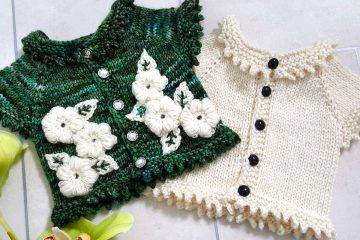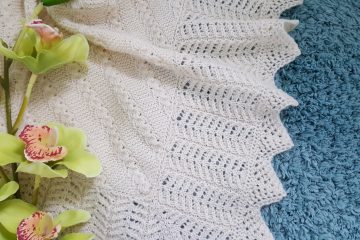The social media streams of the knitting and yarn world over the past few weeks have started to be abuzz with a new phrase.
The “pay what you can” phrase and its variations, that are being thrown around are all to do with the idea of “financial inclusivity”.
What is “financial inclusivity”?
Financial inclusivity is all about giving options that allow goods and services to be accessible and affordable to all. It aims to remove the constraints that prevent and exclude people from certain things.
The financial sector is a good example of this. With the increasing availability and use of the internet, services that were once available only to the few, such as crowd-funding or social lending, have now become available to the many.
How does “pay what you can” achieve financial inclusivity?
So the idea behind the “pay what you can” price of goods and services is that you choose the price, depending on two things.
- What you deem the product to be worth to you, and
- What you can actually afford.
If one person decides a product is worth £100 and can pay £100, then they may choose to pay £100.
If another person decides that same product is worth £200, but can only afford £50, then they may choose to pay £50.
For example, marriage counselling may be worth more to someone who has children, a shared home, and has been married for 10 years, than it is to someone who only recently tied the knot and still live apart. But the first couple may not be able to afford as much as the second couple.
Is “pay what you can” a new thing?
No. This isn’t a new business model in the world of, well, business. Businesses, in particular, the online entrepreneur type businesses, have been using this model in some of their offerings for years.
I first came across the “pay what you can” offering from a very inspirational lady called Cerries Mooney back in 2017.
After hitting a bit of a low spot in my self-confidence I found her through Pinterest, and I was intrigued by her free product, the Primary Archetype Test.
The test is designed for entrepreneurs to help them with their branding. But I was more intrigued due to personal struggles at the time.
The test told me that my Primary Archetype is a Sage. This means I am good at teaching and passing on knowledge to others. The report told me a lot more about me too!
Interested in finding out more I purchased her Archetype Branding Initiation Kit, which is based on the “pay what you can” price model, and in this you get to discover your Secondary Archetype.
Again, it is aimed at businesses and branding, and it starts at £1 and you can pay whatever you want above that.
To me, the product was worth a lot more than £1. I felt it was worth more than the £99 it used to be priced at too. Now I couldn’t afford £99 at the time. But I could afford more than £1. My email receipt tells me I could afford £24 at the time.
(If you’re interested my Secondary Archetype is Alchemist.)
Cerries truly helped me out of that low spot.
I still re-read those archetype reports when I start to feel a little lost. And I’ve purchased other products from her since too.
But is this new in the knitting and yarn world?
I’m not going to categorically say no. I’ve not seen the offering of every designer and dyer in the world.
But it does appear to be making some more noise.
I’ve seen a few well-known indie yarn dyers and designers announce this new type of offering these past few weeks.
Announced under a few variations… “pay what you can”, “pay what you want”, “pay what works”, etc. They are all essentially trying to achieve “financial inclusivity”.
So do they achieve “financial inclusivity”?
This is where it gets interesting.
If you think I went off on a tangent with the archetypes, yes, I did a little. But the reason I mentioned Cerries, and her products, is because the one I purchased truly is a “pay what you can” offer.
Whether you can afford $1, $10, or $100. You can choose how much you can afford and what you feel it will be worth. I believe it truly is a “pay what you can” offer that achieves financial inclusivity.
But the offerings I’ve seen from the designers and dyers?
Well, the ones I’ve seen so far are not a true “pay what you can” offer, and do not achieve financial inclusivity for all.
The new offers seem to give you a choice of “price points”. Typically they are following this pattern:
- a minimum price (one I’ve seen is actually more than the original price, making it available to even fewer people!)
- the original price
- a price that covers “costs”
- a price that offers a “living wage” or the “true” price
- a free “guilt trip” included in some
Not every offer includes all of these price points, but you get the gist.
The idea is that some people will pay the cheaper price, some the higher price, and most the middle price. Averaging out to the same overall.
Don’t designers and dyers sell different products!
Yes. Absolutely.
As a dyer and a designer myself, I can tell you that it is easier to calculate the selling price of yarn than it is a pattern.
The cost involved in creating one skein of hand-dyed yarn remains the same. It may or may not cost the same as another skein. But once the yarn has been dyed it has incurred its costs. When a skein has been sold another must be dyed to take its place. To continue generating profit new skeins must be continually dyed. Each with their own cost and profit values. Earnings per skein are short term.
The cost involved in creating one pattern may also be the same as creating another pattern. But a new product with its own costs doesn’t need to be created each time a sale is made. The cost of designing the pattern doesn’t change once the pattern has been published. Once enough sales have been made of that pattern to cover the costs, anything after that continually becomes profit for that pattern. Earnings per pattern are long term.
Can indie dyers achieve financial inclusivity for all?
In my opinion, no.
An indie dyer could sell their product at cost price. This allows them to cover their costs and restock, and it would make their product available to more people.
But, there will always be some who still couldn’t afford that.
Plus is doesn’t allow the dyer to make a living.
It’d be like trying to shoot a fish in a barrel, missing the fish, and shooting your own foot.
Can indie designers achieve financial inclusivity for all?
Yes, I believe this is a future possibility, but in limited circumstances…
Printed Patterns
A designer, who sells printed patterns, will have material costs to cover just like an indie dyer. So it wouldn’t be possible in this situation. Not without the risk of missing that fish in the barrel.
Digital Patterns via Etsy
Whilst most of the Etsy fees that sellers pay are based on a percentage of the product price when it is sold, they also charge a fixed fee per listing. So the designer would need to cover this cost. Also, Etsy does not have the programming to allow the buyer to choose the price.
Digital Patterns via eBay
Whilst the “auction” and “make an offer” options of eBay would work perfectly for the “pay what you can” price model, eBay doesn’t allow the sale of digital products.
Digital Patterns via a Designer’s Own Website
Depending on the platform the designer hosts their website on, this is absolutely possible. There are plugins (like apps but for website designers) that allow the buyer to choose the price they want to pay. However, the designer also has ongoing monthly costs of running that website. So again there is the risk of missing that fish in the barrel.
Digital Patterns via Ravelry
This is possibly the most promising option. Ravelry does not charge a fee to list a pattern in their database. Nor do they charge you any ongoing monthly fees. The only fees involved are when a pattern is sold, and that is a percentage of the pattern price.
A more expensive pattern = higher fees.
A less expensive pattern = lower fees.
Both Ravelry and the designer will get something.
However, Ravelry does not currently have the programming needed that would allow the buyer to choose the price. It is based on a fixed price system. I.e. the price is what the price is.
Couldn’t all the patterns just be made free?
Yes they could. But then how would the designer make a living?
And without the possibility of renumeration we wouldn’t have quite as many lovely patterns to choose from.
Would you want that?
So what can be done?
When you run a business, and for those who live in the real world, it is generally understood that when you sell a product you need to cover your costs, plus make some profit.
This allows you to restock your products, plus make a living.
That’s fair right?
We all have bills to pay. And for those, we need to earn money.
I’m yet to find a business that will accept a pair of hand knitted fingerless mittens as part payment!
Some of the offers I’ve seen may not achieve financial inclusivity for all, but they do make the products and services available to more people.
And that is a good thing, so long as the dyer or designer has made that choice themself.
I’m very wary of a few offers I’ve seen though. Phrases like “below costs” and “true price” have been included in a few announcements. It feels like a guilt trip, but more. I can’t quite put my finger on it but it’s not feeling right.
Personally, I don’t feel indie dyers will realistically be able to achieve full financial inclusivity. The costs per product are too much.
But with some additional programming to some existing pattern selling platforms, indie designers could most definitely achieve full financial inclusivity if they were to look at the long term investment of designing a pattern, and not the short term gains.
What do you think about these types of offers? Let me know in the comments.
Best wishes, Sam xox
P.S. If you want to receive new articles from us directly into your inbox, then please sign up below.



0 Comments